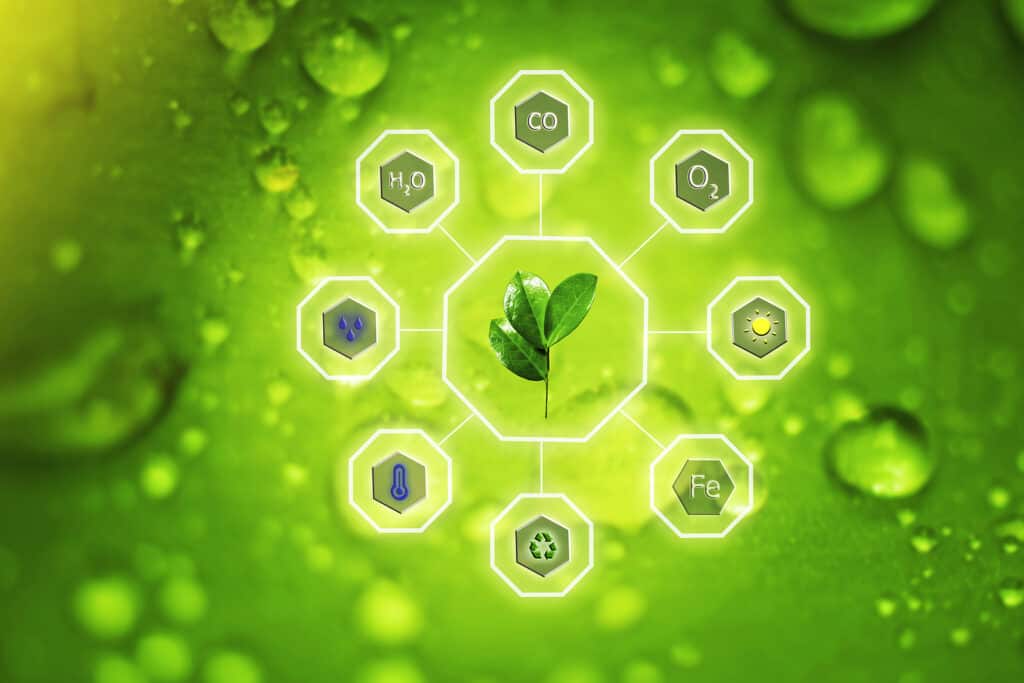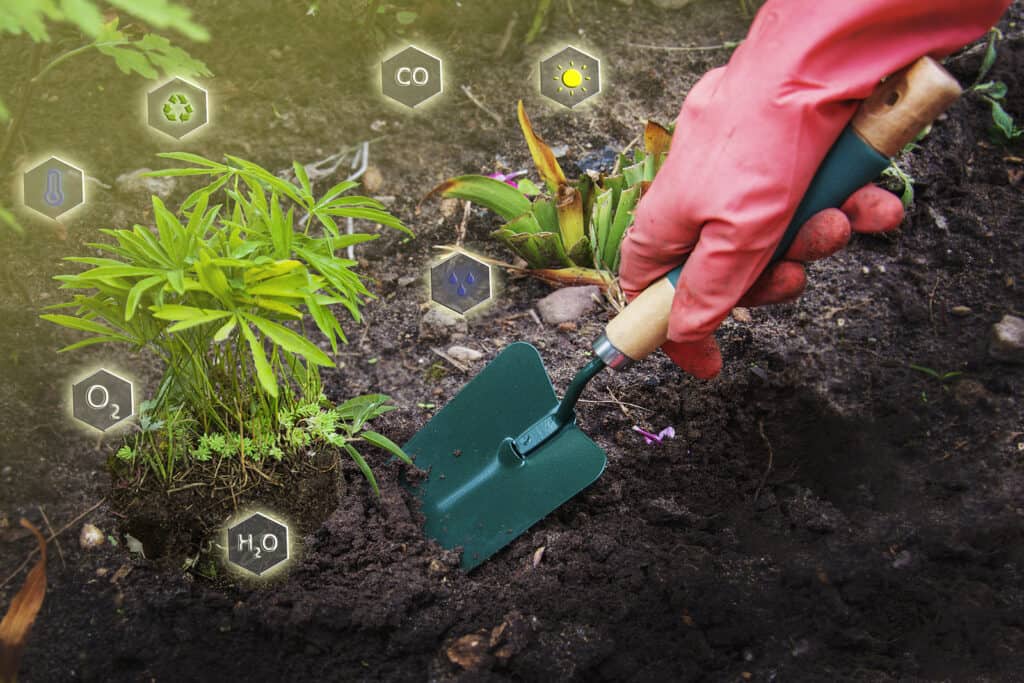Energy Efficiency in Green Building Certification
In our modern era, the importance of embracing sustainable and eco-friendly practices cannot be overstated. As a company, we understand the significance of our environmental commitments and responsibilities, especially in the building and construction sector. Therefore, we aim to explore the pivotal role of energy efficiency in achieving a green building certification system, with a special emphasis on widely recognized industry standards.
By prioritizing energy efficiency, we aim to reduce operational costs over time, ensuring that we make economically savvy decisions as a company, seeking long-term savings and financial benefits. Our dedication to green building practices aligns with our vision for a sustainable future and responsible business practices. We recognize that the urgency of adopting eco-conscious approaches is paramount in today's world, and as a company, we are committed to doing our part in minimizing our environmental impact.
Understanding Green Building and Its Significance
Green building, also known as sustainable building, represents a conscious approach to architectural design that takes into consideration environmental impacts and the enhancement of human health and comfort. The practice of green building has grown exponentially over the past decades due to the alarming increase in environmental degradation and the urgent need to mitigate climate change impacts.
The significance of green buildings cannot be overstated. It ensures the efficient use of resources, minimizes waste, reduces harmful emissions, and guarantees a healthier indoor environment. A green building approach is not just a societal or environmental obligation, but also a means to substantial financial savings in the long term.

What is Energy Efficiency?
Energy efficiency is a fundamental concept aimed at minimizing energy consumption while ensuring that the intended application operates optimally without compromising comfort or effectiveness. Within the building industry, this concept entails employing strategies that enable the delivery of the same services while using significantly less energy. For example, by adopting LED bulbs instead of incandescent bulbs, buildings can achieve the same level of illumination while consuming less power.
To create energy-efficient buildings, a combination of various techniques and cutting-edge technologies are utilized. One such approach involves implementing superior insulation, which helps in reducing heat loss or gain, thus lowering the need for excessive heating or cooling. Energy-efficient appliances are also incorporated to ensure that electricity usage is minimized without sacrificing performance.
The Integral Role of Energy Efficiency in Green Building Certification
Energy efficiency assumes a paramount position in the pursuit of core green building certification, representing a critical aspect of sustainable construction endorsed by certifying organizations like the U.S. Green Building Council (USGBC), which administers the LEED certification. The emphasis on energy efficiency within these rating systems stems from its significant influence on a building's environmental impact, rendering it a central pillar in the broader sustainable building movement.
They adopt a comprehensive approach to assess energy efficiency and its related components. This multifaceted evaluation encompasses the incorporation of cutting-edge energy-efficient technologies and systems into the building's design and operations. Factors such as the choice of materials, lighting fixtures, HVAC systems, and appliances all play an integral role in determining the building's energy performance.
How to Achieve LEED Certification
Achieving LEED (Leadership in Energy and Environmental Design) certification involves a step-by-step process that emphasizes environmental performance and sustainability. To attain this internationally recognized certification developed by the US Green Building Council (USGBC), careful planning and implementation of eco-friendly practices are essential.
Step 1: Familiarize Yourself with LEED Criteria and Prerequisites
Begin by gaining a comprehensive understanding of LEED's prerequisites and scoring system. This involves delving into various areas crucial to sustainable construction, such as sustainable site development, water savings, energy efficiency, materials selection, and indoor environmental quality. By grasping the requirements in each category, you can strategize how to incorporate green initiatives effectively.
Step 2: Conduct Energy Simulation and Design Your Building
Conduct an energy simulation of your building to gain insights into its energy consumption patterns. This simulation will aid in the design phase, allowing you to optimize energy performance by making informed decisions. Utilize the simulation results to implement design strategies that prioritize energy efficiency.
Step 3: Incorporate Energy-Efficient Technologies and Strategies
Integrate a range of energy-efficient technologies and strategies into the building's design and construction. Examples include adopting high-efficiency HVAC (heating, ventilation, and air conditioning) systems that reduce energy consumption while maintaining a comfortable indoor environment. Energy-efficient lighting solutions and smart thermal insulation are additional elements to be considered to further enhance the building's green credentials.
Step 4: Embrace On-Site Renewable Energy Generation
Whenever possible, incorporate on-site renewable energy generation to supplement the building's power needs. This can involve the installation of solar panels or wind turbines to harness clean energy and reduce reliance on traditional energy sources. Demonstrating commitment to renewable energy can significantly contribute to achieving LEED certification.
Step 5: Implement Continuous Energy Monitoring
Sustainable practices should not end with the building's completion; continuous energy monitoring is essential to ensure ongoing adherence to LEED's energy efficiency criteria. Regularly track and verify your building's energy performance to identify potential areas for improvement and maintain compliance with LEED standards over time.
Step 6: Apply for LEED Certification
Once your building project has successfully integrated sustainable features and achieved energy efficiency goals, it's time to apply for LEED certification. Prepare and submit all necessary documentation showcasing your building's eco-friendly initiatives, energy-efficient systems, and compliance with LEED requirements. Upon review and approval, your building will receive the prestigious LEED certification, confirming its status as an environmentally responsible and sustainable structure.

The Benefits of Energy Efficiency in Green Building Certification
The integration of energy efficiency within green building certification programs yields a myriad of advantages for building owners, occupants, and the environment. These benefits go beyond mere energy conservation, encompassing a wide range of positive impacts on various aspects of sustainability and well-being. Below are some key advantages:
Environmental Protection
At the core of green building certification lies a profound commitment to reducing the ecological footprint of buildings. Energy-efficient structures consume fewer resources and produce fewer waste products, resulting in lower greenhouse gas emissions. By significantly contributing to mitigating climate change, energy-efficient buildings play a pivotal role in safeguarding the environment for future generations.
Cost Savings
Energy-efficient buildings are designed to minimize energy consumption, leading to substantial cost savings on utility bills over time. While the initial investment in implementing energy-efficient technologies may be higher, the long-term returns through reduced energy expenses are generally well worth it.
Improved Occupant Comfort and Health
Energy-efficient buildings often prioritize indoor air quality and thermal comfort. These enhancements translate into healthier and more comfortable living and working environments, contributing to improved productivity in offices and an enhanced quality of life in residential settings.
Enhanced Building Value
Green building certifications, such as LEED, enhance a building's market value. Certified buildings are perceived as more attractive to potential occupants and investors, which can lead to higher rental and sale prices. Furthermore, green buildings tend to experience lower vacancy rates, making them a sound long-term investment.
Resource Efficiency
Energy-efficient buildings maximize the utilization of natural resources like sunlight and wind, while minimizing the reliance on non-renewable resources. By promoting resource efficiency, these buildings alleviate the strain on the Earth's finite resources, contributing to a more sustainable future.
Regulatory Compliance
As energy regulations and emissions standards become increasingly stringent, having an energy-efficient building ensures compliance with evolving environmental requirements. Green building certifications provide a structured framework for meeting these regulatory demands.
Enhanced Public Image and Reputation
Achieving it, such as LEED, enhances a company's public image and reputation. It demonstrates a tangible commitment to environmental stewardship and sustainability, resonating positively with customers, stakeholders, and the community.
Increased Resilience
Energy-efficient buildings often exhibit heightened resilience to power outages and fluctuations in energy prices. By incorporating renewable energy sources, they can operate off the grid if necessary, reducing dependence on external power sources and mitigating the impact of energy price fluctuations.
Other Green Building Standards
In addition to LEED, several other green building certification standards from various countries emphasize energy efficiency and sustainable practices. These certifications include:
- BREEAM (Building Research Establishment Environmental Assessment Method): BREEAM is a widely recognized green building certification based in the United Kingdom but with international reach. This comprehensive assessment method evaluates various aspects of a building's environmental impact. It assesses energy usage, considering factors like heating, cooling, and lighting systems. Additionally, it examines health and wellbeing aspects, pollution prevention, transportation options, materials' eco-friendliness, waste management practices, ecological impact, and management processes for sustainable operation.
- Green Star: Originating in Australia, the Green Star certification program assesses both individual buildings and entire communities. It focuses on evaluating the environmental design and construction features of projects. The certification considers factors such as energy efficiency, carbon emissions, water management, indoor environmental quality, sustainable materials usage, and innovative environmental practices.
- Living Building Challenge: The Living Building Challenge is a renowned green building certification program established in the United States but recognized globally. It sets an ambitious standard, demanding buildings to achieve net-zero or net-positive energy performance. This means that the building must produce as much or more energy than it consumes over its lifetime. It also evaluates other aspects like water conservation, use of non-toxic materials, social equity, and the integration of the building with its surrounding environment.
Key Takeaways Energy Efficiency in Green Building Certification
In today's world, where the urgency of sustainability and environmental responsibility is increasingly evident, energy efficiency has emerged as a paramount factor in the realm of green building certification. This crucial aspect holds immense significance across various widely recognized green building standards such as LEED, BREEAM, Green Star, and others. The integration of energy efficiency principles within these certifications underscores the critical role it plays in shaping the future of sustainable construction practices.
It is have become a global priority as societies strive to reduce their ecological footprint and combat climate change. Achieving these certifications requires adherence to stringent criteria that evaluate a building's overall environmental impact and performance. Among the multifaceted considerations, energy efficiency stands out as a fundamental pillar that directly influences a building's success in obtaining certification.
LEED, BREEAM, Green Star, and similar standards set forth comprehensive guidelines for assessing the energy efficiency of buildings. They emphasize not only the use of renewable energy sources and energy-efficient technologies but also the optimization of energy consumption throughout a building's lifecycle. From design and construction to operation and maintenance, energy efficiency practices are continuously monitored to ensure the building remains compliant with the rigorous certification standards.
The Future of Energy Efficiency in Green Building Certification
The future of energy efficiency in green building certification is poised to take on an even greater significance as the urgency of addressing climate change becomes more pronounced. With the growing recognition of the environmental impacts of traditional building practices, the emphasis on energy efficiency is expected to escalate, driving the construction industry towards more sustainable and eco-friendly solutions.
They are anticipated to raise the bar by setting even higher standards for energy efficiency. As the technology and knowledge surrounding energy-efficient practices continue to advance, these certifications will likely evolve to reflect the latest advancements in sustainable construction. Building designs and materials will be scrutinized with greater precision, encouraging the adoption of innovative solutions that optimize energy performance and minimize resource consumption.
Moreover, the integration of renewable energy sources will play a pivotal role in shaping the future of green building certification. As the demand for clean energy intensifies, the construction industry is expected to incorporate renewable energy technologies, such as solar power, wind energy, and geothermal systems, more extensively. Buildings will be designed to harness and utilize on-site renewable energy, enabling them to reduce their dependence on fossil fuels and contribute positively to the overall energy grid.
Frequently Asked Questions about Energy Efficiency in Green Building Certification
1. What is green building certification?
Green building certification is a process that verifies a building's performance based on several criteria, including energy efficiency, water efficiency, CO2 emissions reduction, improved indoor environmental quality, and stewardship of resources.
2. What is the role of energy efficiency in green building certification?
Energy efficiency plays a crucial role in green building certification. Many certification programs prioritize energy efficiency in their rating systems, as it directly impacts a building's environmental footprint. Achieving energy efficiency can significantly contribute to a building's overall score during the certification process.
3. What is LEED Certification?
LEED (Leadership in Energy and Environmental Design) is an internationally recognized green building certification system developed by the U.S. Green Building Council. It provides a framework for healthy, highly efficient, and cost-saving green buildings.
4. How does energy efficiency contribute to LEED certification?
LEED certification assigns points for several categories, one of which is “Energy & Atmosphere.” This category focuses on energy efficiency, including energy use reduction, energy-efficient design and construction, renewable energy use, and ongoing energy use management.
5. What other green building certification programs prioritize energy efficiency?
Aside from LEED, other certification programs like BREEAM (Building Research Establishment Environmental Assessment Method), Green Star, and the Living Building Challenge all prioritize energy efficiency. They have specific criteria related to energy use reduction, energy-efficient systems, and renewable energy use.
6. Are energy-efficient buildings more expensive to build?
While the initial investment in energy-efficient technologies can be higher than traditional construction, the long-term savings from reduced energy costs can offset this. Additionally, green buildings often have higher property value and can command higher rent, leading to increased financial returns.
7. How can I make my building more energy-efficient to qualify for green certification?
There are several strategies to make a building more energy-efficient. These include using high-efficiency HVAC systems, incorporating superior insulation, installing energy-efficient lighting and appliances, using renewable energy sources, and ensuring the design takes advantage of natural light and heat.
8. Can an existing building be retrofitted for energy efficiency and achieve green building certification?
Yes, existing buildings can be retrofitted to improve energy efficiency and apply for green building certifications. Energy-efficient retrofits can include upgrading HVAC systems, replacing lighting and appliances with energy-efficient alternatives, improving insulation, and installing renewable energy systems.
9. How does energy efficiency in green buildings contribute to environmental protection?
Energy-efficient buildings use less energy, which results in lower carbon emissions, a primary factor in climate change. They also use fewer resources and generate less waste, leading to a lower environmental impact.
10. Can energy-efficient green buildings contribute to occupant health and comfort?
Yes, energy-efficient buildings often have better indoor air quality and thermal comfort, contributing to improved occupant health and productivity. Strategies like maximizing natural light, improving ventilation, and using non-toxic materials can all improve the indoor environment.
Conclusion
As a company committed to sustainability and environmental responsibility, the knowledge and insights gained from exploring the role of energy efficiency in green building certification are deeply meaningful. Understanding the significance of energy-efficient practices and their integral role in achieving certifications like LEED has reinforced our dedication to making a positive impact on the environment and the communities we serve.
Embracing green building principles, we are determined to create spaces that not only meet the needs of the present but also safeguard the needs of future generations. The recognition of the urgent need to combat climate change and reduce our ecological footprint drives us to implement energy-efficient technologies, renewable energy sources, and innovative building practices.
Sources
- https://www.wbdg.org/resources/green-building-standards-and-certification-systems
- https://worldgbc.org/sustainable-building-certifications/
- https://blog.allplan.com/en/the-10-most-popular-green-building-certifications
- https://www.usgbc.org/leed
- https://www.gbci.org/
- https://www.sharplaunch.com/blog/green-building-certifications/
- https://ugreen.io/how-to-choose-a-green-building-certification/
- https://sustainability.yale.edu/explainers/yale-experts-explain-green-building-certifications
- https://21acres.org/classes-events/virtual-learning/virtual-building-tour/
- https://www.springer.com/journal/12053

